 The basic ingredients for a proper Purim celebration on the 14th of Adar include:
The basic ingredients for a proper Purim celebration on the 14th of Adar include:
How We Read the Story The Megillah is read or the Purimspiel is performed on the 13th of the Jewish month, Adar, Purim Eve, and then again during the day on the 14th. Often congregations create elaborate and hilarious spiels that parody another play, movie, musical, or theme. The reasoning behind this is along the same line as for our costume masquerades. *Click here for sources on Purim Parodies and humor*. Your youngest children certainly will hear a different version of this animated tale than the older kids and the congregation listening to the M’gillah. At the nursery school and early elementary school age, we focus on the characters. Just like the characters in a classic Disney movie, they are silly and extreme, either very good or very evil. Click here for M’gillah talking points for your youngest children. Older children and adults will be much more captivated by this dramatic and colorful story if they get a look at the real thing. Open up the nearest Tanach. The third section, the Writings, includes a bunch of other interesting books, as well as four other m’gillot and stunning poetry. Here you will find, M’gillat Esther. If you haven’t read it before, I highly encourage you to check it out! It’s a racy tale full of twists and turns, a real page-turner (or "scroll-roller," as it were). And the truth is, there is a lot more to the story than what we teach our children at Sunday School. Click here for my version of it, "That’s How We Roll."
DID YOU KNOW that when reading the Megillah, the Talmud tells us to pronounce the names of the ten sons of Haman in one breath, indicating their simultaneous death? Also the congregation should read certain verses about Mordechai’s triumph, aloud with the reader.
Authority to Cross Dress We dress up in costumes to honor the hidden and mistaken identities as well as the ironic twists throughout the story. For example, Esther does not reveal her identity as a Jew until the very end. And then there’s the time when Haman proposes a reward ceremony for himself when the king is really talking about Mordechai. With your children, see if you can spot the "backwards" elements in the story. Look for the contradictions, the foiled plots, the reversals of fortune and the changes in identity.
DID YOU KNOW that some say that Mordechai hid his ability to speak all of the world’s languages? This allowed him to understand Bigthan and Teresh when they were plotting to kill the king.
Rash Rash RASH! We don’t just dress up, we make A LOT of noise!! ("Rash" is Hebrew for "noise") Usually when we are in the synagogue we’re required to observe at least some level of decorum. But not on Purim! Here’s why we make so much noise: Haman is a descendent of Israel’s perma-enemy, the Amalakites. It was a custom to blot out the name of our enemies with noise. To this day, some people write our enemy’s name on the bottom of their shoes and stomp it out whenever the name is read aloud. So, when we hear the name of Haman (I can’t even type it without stopping to hear the "boo!") we scream and boo and hiss and rattle and twist our groggers or ra-ashanim to our hearts’ content right there in the synagogue!
DID YOU KNOW that Haman’s name occurs 54 times throughout Megillat Esther?
In the fairy tales, it’s easy to see the evil that needs to be stamped out. What about in our world? About what do you want to stand up and make some noise? Purim is the perfect time to talk with your children about standing up for your beliefs. Consider what injustice or impression you want to stamp out today. Talk about what our role is in the world events around us. In what ways can you and your family stamp out what you believe to be unfair? Locally, globally? 100 bottles of Shlivovitz On the Wall It is actually a mitzvah for the grown-ups to get drunk on Purim! Of course there has been plenty of debate and it’s clear that this part of the holiday celebration is not to be abused. Rather, it should be done safely. That said, here is the mitzvah part: The Talmud tells us (Megillah 7b) that one should drink on Purim until she can no longer distinguish between the phrases, "Arur Haman" ("Cursed is Haman!") and "Baruch Mordechai" ("Blessed is Mordechai!") To this day in Tel Aviv they call their Purim parade, "Adloyada," (Ad lo yada – Till one doesn’t know). One more fun little tid bit. According to Gematria, or Hebrew numerology, these phrases have the same numerical value and some authorities have ruled that one should drink until she is unable to calculate the numerical values. Hop Mein Homentashn Our heroes, Mordechai and Esther, put a big emphasis on giving gifts and tzedakah on Purim. There is a custom now of sending gifts, in Hebrew "mi-SHLO-ach ma-NOT" which are usually a small basket of foods like home-made hamantashn, fruits, and candies. Learn more about hamentashn here. The Purim story is about a time of great threat when our ancestors hid their identity for survival. However they also found a way to stand up for who they were, and through this, they were redeemed. This is our Jewish way of making the world right. In celebration of this triumph, we pay special attention to the joy of gift giving as well as the necessary work we must do to help those less fortunate. To whom can you and your family give a gift of appreciation? Stamp out injustice this year by giving tzedakah. Make a donation to a cause important to you. 





